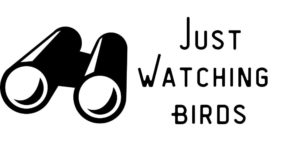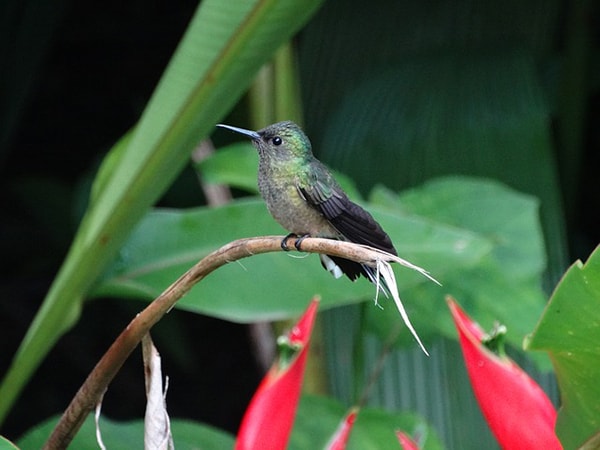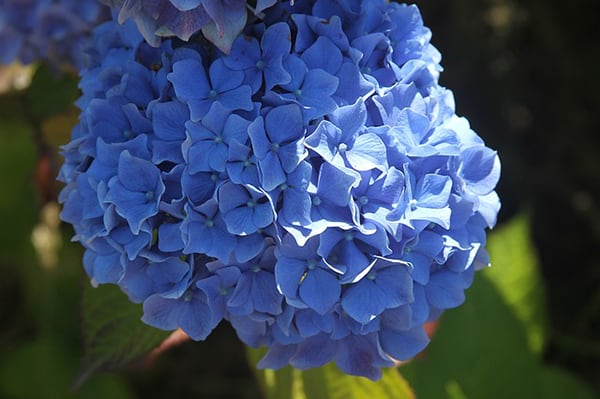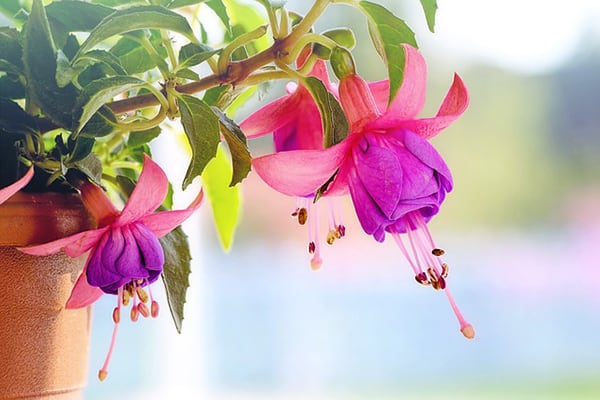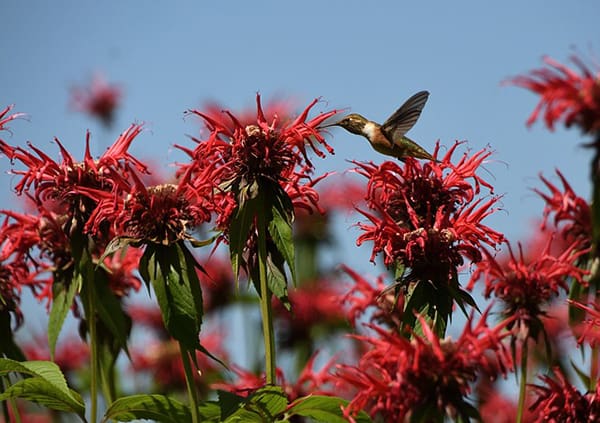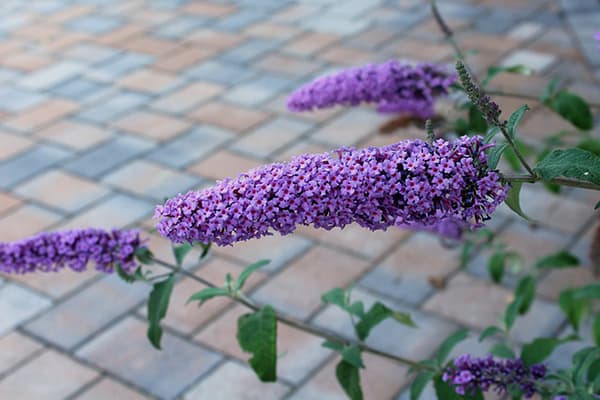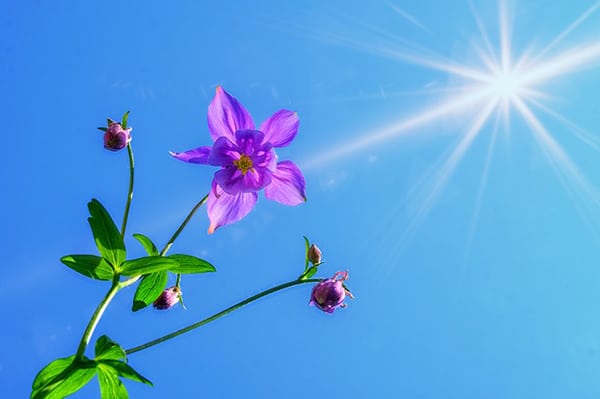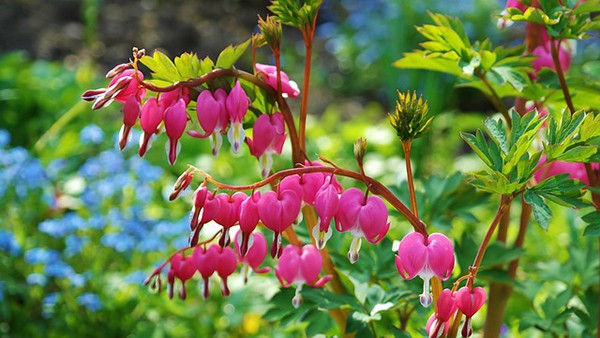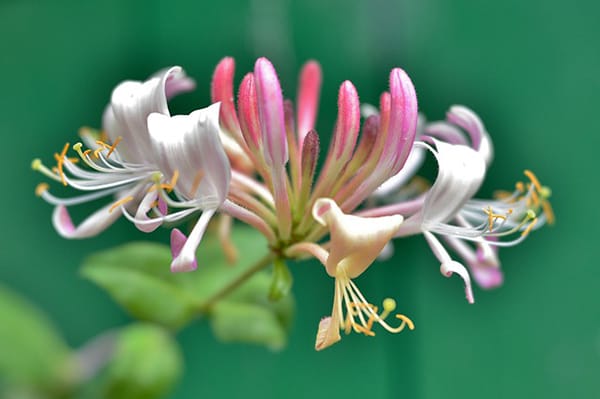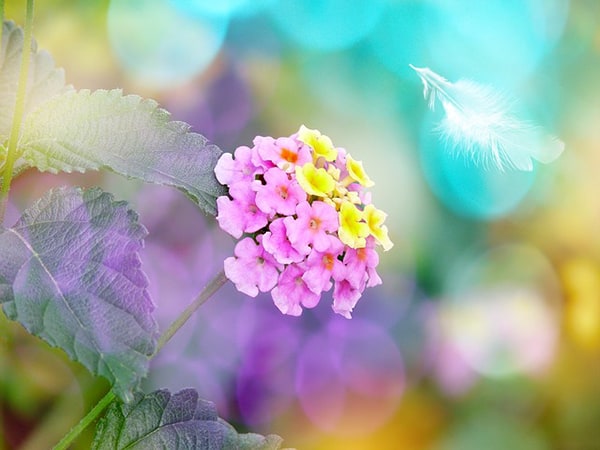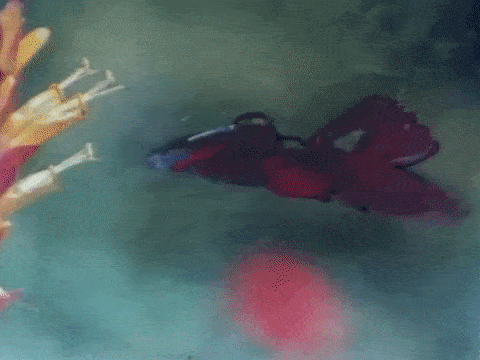As an Amazon Associate, we earn from qualifying purchases with no additional costs for you.
When it comes to members of the bird world, hummingbirds are some of the most precious. However, if you don’t offer the right incentives, they can also be some of the most elusive. Fortunately, growing flowers that attract hummingbirds are almost guaranteed to bring these eye-catching creatures to your porch or backyard.
Hummingbirds are attracted to flowers because of their color and shape. The 10 best flowers to attract hummingbirds are:
- The Cardinal Flower
- Fuchsia
- Beebalm
- Lupine
- The Butterfly Bush
- Columbine
- Bleeding Heart
- The Trumpet Vine
- Honeysuckle
- Lantana
If you’re unsure about installing a plastic hummingbird feeder (or even if you already have one!), the right flowers are a great, all-natural source of food for your tiny feathered friends. Your local hummingbirds might even pollinate your flowering plants in the process!
Plus, nectar isn’t the only thing hummingbirds eat. Flowers offer pollen and attract bugs that some hummingbird species like to snack on, as well.
So, which flowers are the best for attracting hummingbirds to your yard? And how should you plant these flowers for the best results?
TIP: If you want to check out the best pair of binoculars for bird watching, we recommend a pair of waterproof and fog-proof 8 x 42 binoculars like the Celestron – Outland X 8×42 Binoculars (Amazon link).
The 10 Most Beautiful Flowers That Attract Hummingbirds
It’s true that hummingbirds love nectar. But these tiny birds can also be quite picky about their meals!
Hummingbirds, like almost all pollinators, are attracted to certain flowers because of their color and shape. If your garden doesn’t include the right variety of flowers that attract hummingbirds, your local birds will fly right past your yard.
Fortunately, many of the flowers that attract hummingbirds are easy to grow and come back year after year. So these tiny creatures might be picky, but at least they’re low-maintenance!
1. Cardinal Flower
You might find multiple species under this common name, but the one we’re talking about is Lobelia cardinalis. This red-flowered perennial is native to much of North America, including parts of Canada and Central America.
Because of the narrow, tubular shape of the cardinal flower, hummingbirds are actually one of the only animals that can reach inside and pollinate these plants. But if the hummingbird population drops, these flowers can start to disappear.
You can certainly grow this wildflower in your garden, but it’s also quite happy growing in a ditch, meadow, or unkempt pasture. Although the cardinal flower needs moist soil, it can otherwise grow in most conditions (including anywhere from full sun to full shade).
If you live near a wetland or drainage ditch, you might even see these flowers growing naturally throughout the summer.
2. Fuchsia
At first glance, the fuchsia flower almost looks fake. But while the unique shape and vibrant colors look like something out of a cartoon to us, these traits are exactly what make them one of the flowers that attract hummingbirds.
There are multiple species of fuchsia to choose from, many featuring different shades of pink and purple. Generally, though, the best place to grow your fuchsia is in a hanging basket.
Since fuchsia originally comes from a tropical climate, it probably won’t survive outside during the winter unless you live in a very warm climate. However, you can overwinter your hanging fuchsia inside and bring it back out when the temperatures rise.
Fuchsia definitely holds a spot as one of the best flowers that attract hummingbirds. But don’t be surprised if you spot some bumble and honeybees grabbing a taste, too!
3. Beebalm
Obviously, your neighborhood bees will appreciate a garden full of beebalm. However, so will your local butterflies and hummingbirds!
Beebalm is the most common name for this flower, known botanically as Monarda, but you may also know it as horsemint, wild bergamot, or Oswego tea.
Like fuchsia, beebalm includes multiple individual species featuring different colors and growth habits. For the most hummingbird visitors, though, we recommend a vibrant red variety like scarlet beebalm.
Beebalm grows natively across much of the United States, so you may already have some in a nearby meadow or roadside ditch. Still, these wildflowers make great additions to any garden or landscape.
4. Lupine
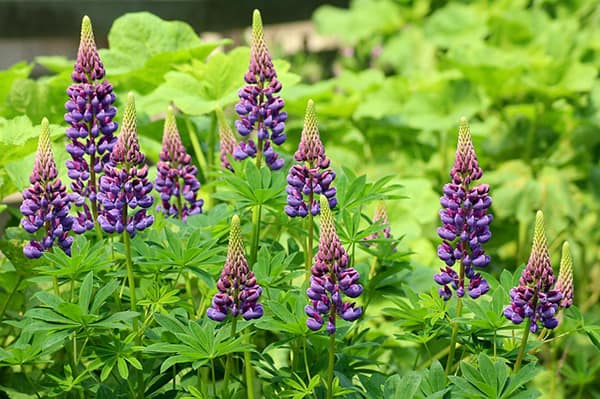
No doubt about it, lupine is a stunner. While this perennial (in most zones, at least) is most famous for its lavender and periwinkle hues, you can also find lupine in pink, yellow, orange, and red.
And if you’re in a colder climate, you’re in luck. Unlike many flowers, lupine actually does best in cooler zones. If you’re in Zone 3 to 7, you can easily grow this plant as a perennial in your garden. If you’re in Zone 8 or above, though, the heat will probably turn your lupine into a short-lived annual.
Lupine grows best in full- or partial sun with well-draining soil, so it adapts well to most standard home gardens. Plus, since lupine fixes nitrogen in the soil, it also makes a great companion plant for many vegetable crops!
Since lupine can grow up to five feet tall, the flowers are particularly attractive to passing hummingbirds.
5. Butterfly Bush
To start, the butterfly bush is actually a common name for over 140 different plant species. However, the variety you’ll probably find at your local garden center is Buddleia davidii.
As the name implies, the butterfly bush is a favorite among butterflies. But what attracts one pollinator typically attracts many more!
In fact, if you look closely at the cluster of flowers on a butterfly bush, you’ll see that each one is a tiny tube. If you haven’t already put it together, that makes these flowers perfect for hungry hummingbirds to feed on.
Most types of butterfly bush do well in full- or partial sun, with minimal watering and fertilizing. So if you’re looking for low-maintenance flowers that attract hummingbirds, this plant should sit at the top of your list.
Again, Buddleia davidii is one of the most common varieties of butterfly bush. But if you want to add one of these plants to your garden or landscaping, we suggest looking up which varieties are best suited to your specific region.
TOP TIP: Flowers are a great way to attract hummingbirds to your garden, but so are bird feeders! Discover the best hummingbird feeders in this article. You might have other bird species visiting your garden. Find out what seed to feed them in this comprehensive guide.
6. Columbine
Like many flowers that attract hummingbirds, the columbine flower actually includes a wide range of species. These flowers come in all different colors. But, of course, red varieties (like Aquilegia canadensis) are the best option if you’re looking to attract hummingbirds to your yard.
While its unique petal shape makes columbine a top choice for many decorative gardens, this plant is actually native across much of the United States. Because of this, columbine is also extremely easy to grow in a variety of conditions, with these flowers acting as perennials from Zone 3 to Zone 9.
In nature, the columbine plant is most at home in overgrown meadows or shaded woods. For the best results, try to keep your columbine flowers under at least partial shade.
These plants are very low-maintenance, but there is one bit of upkeep you should consider. Since the columbine plant expends most of its energy during seed production, deadheading your plants throughout the flowering season will keep them from succumbing to an early death.
7. Bleeding Heart
The name of this flower might sound morbid at first, but all it takes is a single glance to see what inspired the name in the first place! And these early-blooming perennials offer some of the most unique flowers that attract hummingbirds to your yard.
Although the bleeding heart comes from Asia, it’s quite at home in most American landscapes. These shrubs do best in shady spots but love moist soil supplemented with natural compost.
Bleeding heart shrubs are an excellent choice if you want to add springtime flowers that attract hummingbirds to your garden. As the summer heat approaches, though, these plants will die back to the ground.
If you want to feed your neighborhood hummingbirds through the summer and early fall, make sure to plant your bleeding hearts with other late-blooming flowers!
8. Trumpet Vine
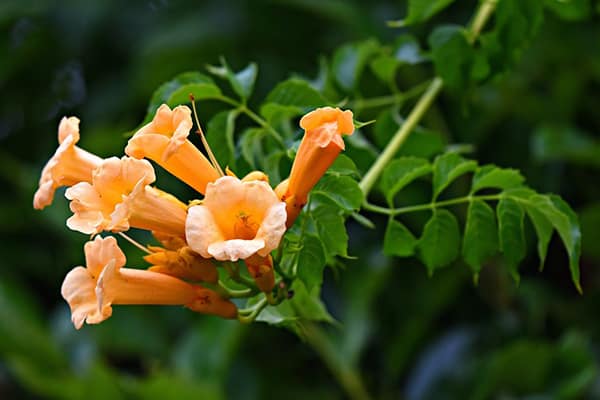
It’s easy to see why gardeners and hummingbirds both love the trumpet vine. However, while these are definitely flowers that attract hummingbirds, you need to think carefully before adding this plant to your garden.
Trumpet vine is native to the Southeastern corner of the United States, but not all native plants are good. In fact, thanks to the trumpet vine’s aggressive climbing and expansive root system, these beautiful flowers have earned the “invasive” label in many regions.
Before even thinking about adding this vine to your landscape, check your state’s invasive plant resources. If you find the trumpet vine on this list, growing it is an absolute “No!”
However, if you live in a colder climate where winter temperatures will help manage its growth, trumpet vine can be responsibly grown in your garden. But you’ll need to plan for its growth habits.
First, keep the trumpet vine away from important structures like the side of a house, building, or pergola. The fast-growing vines can quickly overtake these structures and cause damage.
Second, since the trumpet vine spreads through its roots, consider growing it in a large container instead of the ground. You can also try installing a root barrier around the plant’s base.
Finally, deadhead all flowers before they can go to seed.
TIP: A bird bath is necessary to attract birds on your backyard. There are a lot of options on how and where to place a bird bath. Check out my picks on different bird baths below (Amazon links):
– Free-standing Bird Bath
– Hanging Bird Bath
– Deck Mounted Bird Bath
9. Honeysuckle
Honeysuckle is famous for its sweet fragrance and delicious nectar, and humans aren’t the only ones with this opinion! Planting honeysuckle on your property is a great way to draw in hungry hummingbirds looking for a tasty meal.
Most of the honeysuckle flowers that attract hummingbirds come in two styles: shrub or vine. While most U.S.-native honeysuckle varieties come from the East Coast, you can find wild-grown honeysuckle in pretty much every state across the country.
However, North America isn’t the only place you can find native honeysuckle. Japanese honeysuckle (which, as you probably guessed, comes from Japan) is another popular variety of this flower. Because of its aggressive growth habits, though, many horticulturalists urge against planting this potentially invasive plant.
Instead, consider planting a U.S.-native variety like the western trumpet honeysuckle (pictured above). Ultimately, your best bet is to find a honeysuckle variety native to your region and let it show off its natural beauty to the local hummingbirds.
10. Lantana
From a distance, lantana flowers grow in dense clusters. But when you get up close, you can clearly see that each individual flower is a tiny tube (perfect for a hummingbird beak!).
Though lantana grows as perennials in warmer regions, these flowers have become extremely popular as ornamental annuals throughout the United States. For gardeners in Zone 8 or higher, though, lantana will stay green and produce flowers throughout the entire year.
If you’re searching for flowers that attract hummingbirds for your porch or balcony, lantana does extremely well in a hanging basket! Although not a true vine, this shrub’s growing habit drapes beautifully over the edge of any planter.
As long as you choose a sunny spot for your new lantana flowers, you can expect a long blooming season even in colder climates.
Turn Your Backyard Into A Hummingbird Buffet
With so many native, wild-grown flowers that attract hummingbirds to choose from, you might take a look around your property and realize you already have your own hummingbird buffet growing! But if not, hummingbird-friendly plants are extremely easy to add to your existing garden or landscaping.
However, while it’s fun to feed the hummingbirds, don’t forget about the rest of your local ecosystem. Some flowers that attract hummingbirds can pose a threat to native flora growing on or near your property. As a responsible nature-lover, you should always check your local invasive species list before adding any of these plants.
TIP: Check out my recommended products if you are looking for the best and trusted equipment for birdwatching in the wild or on your backyard (Amazon link):
- Celestron Outland X 8×42 Binoculars
- Celestron Ultima 80 Angled Spotting Scope
- National Audubon Society Birds of North America Book
- Design Free-standing Bird Bath
- Smart Bird Feeder with Camera
- Cedar Bird House for Outside
Did we skip one of your favorite flowers that attract hummingbirds? Let us know in the comments below!
